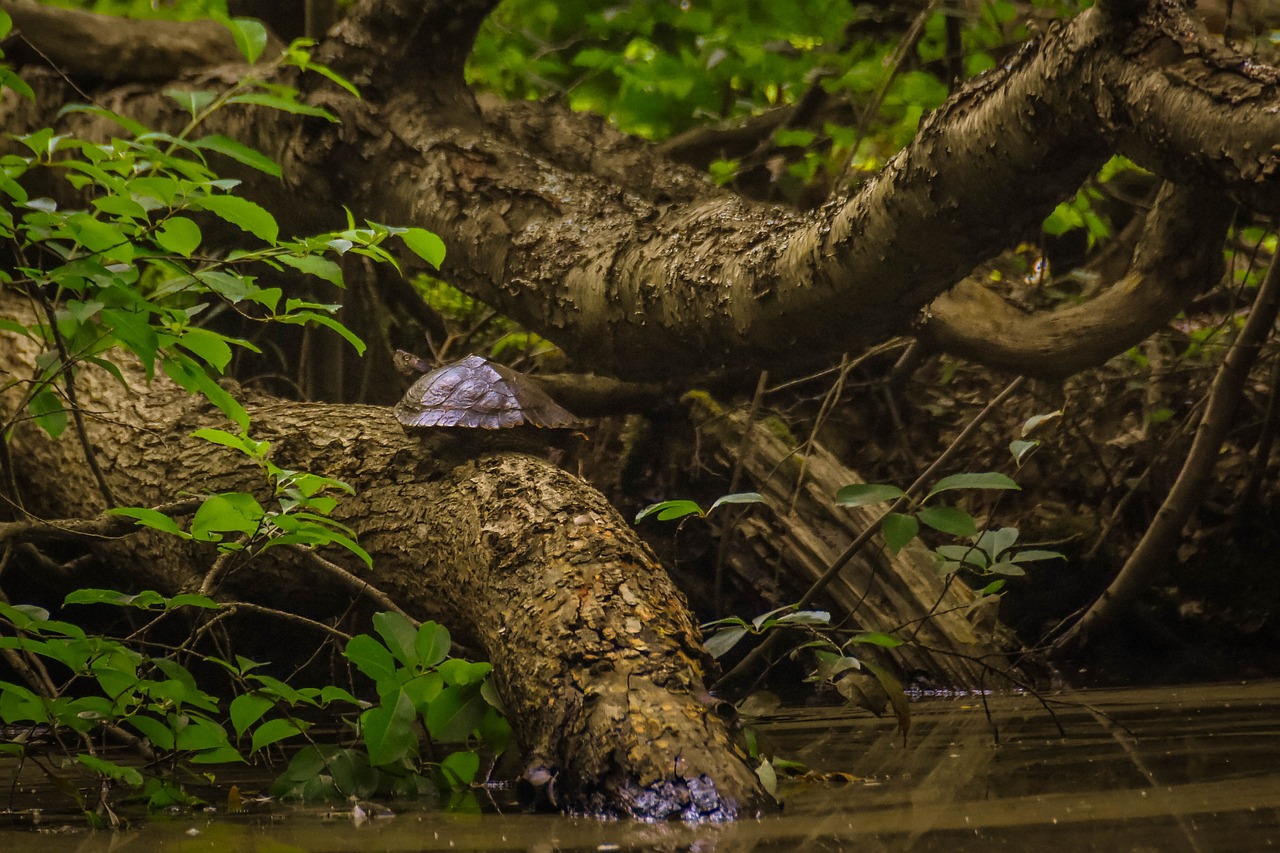If you are a turtle enthusiast or considering getting a turtle as a pet, then you are in for a treat with our Turtle Species Spotlight series. In this installment, we will be shining the spotlight on the Wood Turtle. Known for its unique physical characteristics and fascinating behavior, the Wood Turtle is a captivating species that demands attention. Join us as we explore the distinct features and maintenance requirements of this extraordinary creature. Get ready to dive into the world of Wood Turtles and discover why they make such incredible pets.
Physical Appearance
Shell
The Wood Turtle, also known as the Eastern Box Turtle, is characterized by its unique shell. The shell is oval-shaped and comprised of plates called scutes that are fused together. These scutes provide protection for the turtle’s internal organs. The upper part of the shell, known as the carapace, is a brownish color and is adorned with radiating yellow lines, giving it a distinct pattern. The lower part of the shell, known as the plastron, is yellow with dark blotches. This combination of colors and patterns provides excellent camouflage for the Wood Turtle in its natural environment.
Size
Wood Turtles are considered medium-sized turtles, ranging in size from 5 to 8 inches in length. Males are typically smaller than females, with average lengths of 5 to 6 inches, while females can reach sizes of 7 to 8 inches. Their size makes them perfect for keeping as pets, as they don’t require a large enclosure or a significant amount of space.
Coloration
In addition to their distinct shell patterns, Wood Turtles have unique coloration on their heads and limbs. Their heads are typically brown or olive green with yellow and red markings. The coloration on their limbs can vary from a light brown to a dark olive color. These colors help to further blend the Wood Turtle into their natural surroundings, providing them with additional camouflage and protection.
Habitat
Geographical Range
Wood Turtles can be found in North America, primarily in the northeastern and central regions of the United States and parts of Canada. They are most commonly found in states such as New Hampshire, Massachusetts, New York, and Pennsylvania, as well as in the provinces of Ontario and Quebec in Canada. These turtles are highly adaptable and can thrive in a variety of habitats within their range.
Preferred Environments
Wood Turtles prefer to inhabit areas with slow-moving freshwater, such as rivers, streams, wetlands, and ponds. They are also known to venture onto land, where they can be found in forests, meadows, and grasslands. These adaptable turtles are capable of surviving in a wide range of temperatures and climates, from hot and humid summers to cold and snowy winters. They are excellent climbers and can often be seen basking on logs or rocks near the water’s edge.
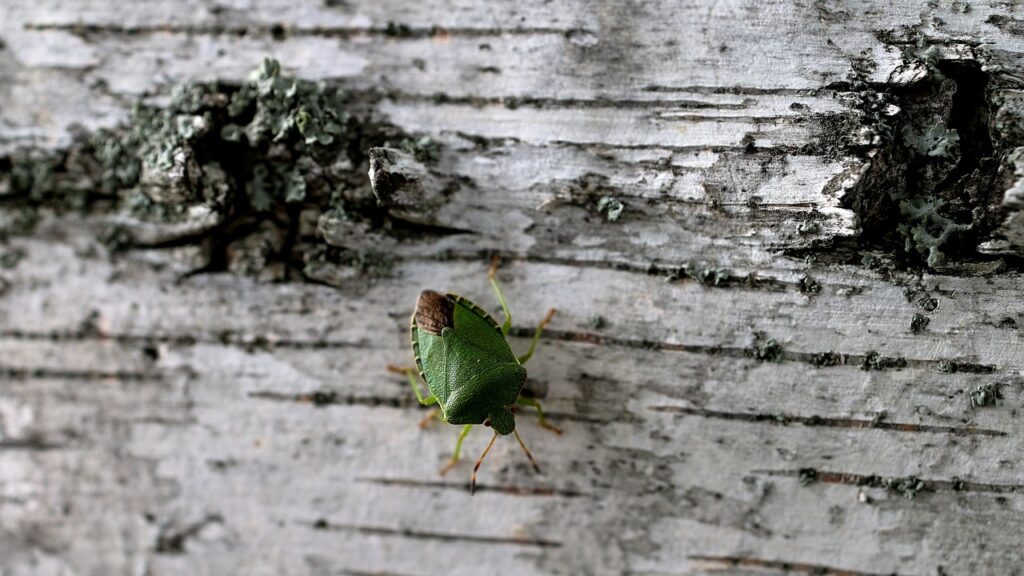
Behavior
Activity Levels
Wood Turtles are diurnal creatures, meaning they are most active during the daylight hours. They spend their days foraging for food, basking in the sun, and exploring their surroundings. During the warmer months, they are particularly active, while in the colder winter months, they may enter a period of hibernation known as brumation. During this time, they will dig burrows in the ground or find shelter under leaf litter to protect themselves from the cold temperatures.
Feeding Habits
Wood Turtles are omnivorous, meaning they eat both plants and animals. Their diet primarily consists of vegetation, such as leaves, fruits, grasses, and mushrooms. They also consume a variety of insects, worms, slugs, and snails. To assist in digesting their food, Wood Turtles have strong jaws and a beak-like mouth, which they use to crush and chew their food. They are opportunistic feeders and will eat whatever is available to them in their environment.
Reproduction
Wood Turtles reach sexual maturity between the ages of 8 and 12 years. Breeding typically occurs in the spring, with males engaging in courtship displays to attract females. Mating takes place in the water, and females will then seek out suitable nesting sites on land. They will dig a hole in the ground and lay a clutch of eggs, typically consisting of 4 to 10 eggs. The eggs incubate for approximately 60 to 90 days, and once hatched, the young turtles dig their way out of the nest and make their way to the water.
Life Span
Factors Affecting Life Span
The lifespan of a Wood Turtle can vary based on several factors. Diet, habitat quality, availability of food, and overall health can all influence the life expectancy of these turtles. Wood Turtles face various threats in the wild, such as habitat loss, pollution, climate change, and road mortality. Those kept in captivity may enjoy longer lifespans, as they are protected from many of these threats and provided with optimal care and nutrition.
Average Life Expectancy
In the wild, Wood Turtles typically have a lifespan of around 30 to 40 years, although some individuals have been known to live much longer. In captivity, where they receive proper care, attention, and a suitable environment, Wood Turtles can live well into their 50s or 60s. This long lifespan makes them a fulfilling and rewarding pet for those interested in keeping turtles.
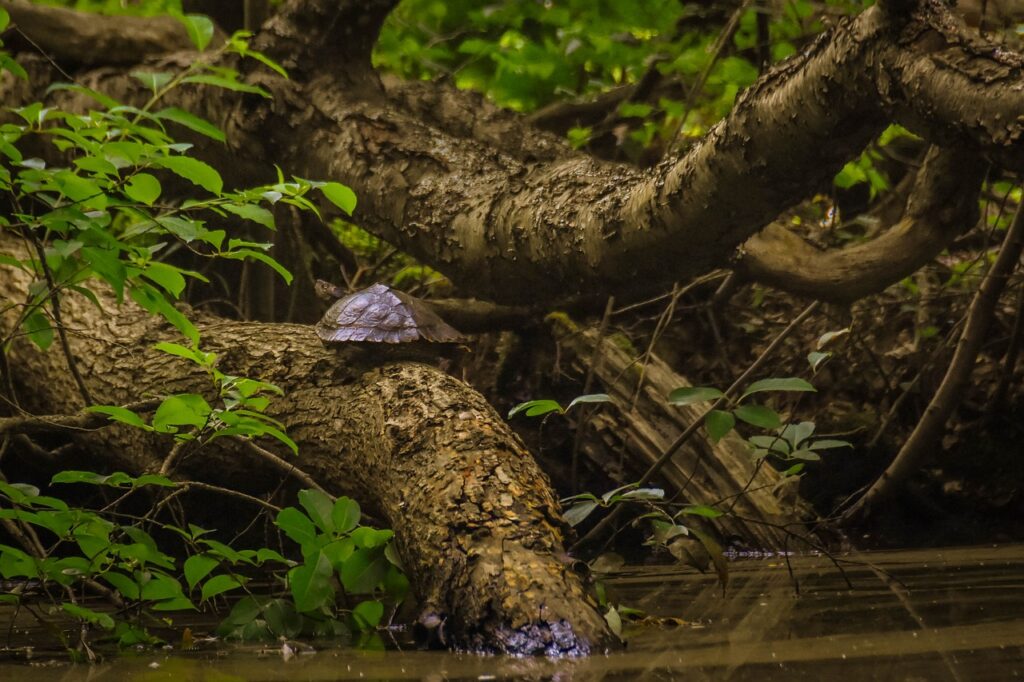
Conservation Status
Threats
Wood Turtles are currently listed as a threatened species, with their populations experiencing significant declines in recent years. Habitat loss due to urban development and agriculture is one of the main threats they face. Pollution, water contamination, and habitat fragmentation also pose significant risks to their survival. Additionally, Wood Turtles are often victims of road mortality as they frequently cross busy roads during their explorations.
Conservation Efforts
Numerous organizations and individuals are working diligently to protect the Wood Turtle and its habitat. Conservation efforts include habitat restoration, land acquisition to establish protected areas, road mitigation measures, and public education initiatives. These collective efforts aim to raise awareness about the importance of preserving and conserving the Wood Turtle species for future generations.
Terrarium Setup
Enclosure Size
When setting up a terrarium for a Wood Turtle, it is essential to provide enough space for the turtle to move around comfortably. A glass or acrylic tank with dimensions of at least 4 feet long, 2 feet wide, and 2 feet high is suitable for an adult Wood Turtle. It’s important to remember that Wood Turtles need both land and water areas in their enclosure, so a combination of aquatic and terrestrial areas should be provided.
Lighting and Heating
Wood Turtles require both UVB lighting and a heat source in their enclosure to mimic their natural habitat. A UVB light should be provided for 10 to 12 hours per day to ensure the turtle receives adequate levels of vitamin D3 for calcium absorption. A basking area with a heat lamp or ceramic heat emitter should also be provided to create a warm spot in the enclosure, with temperatures ranging from 85 to 90 degrees Fahrenheit.
Substrate
For the terrestrial area of the enclosure, a substrate that allows for burrowing and digging is ideal. A mixture of organic topsoil, sand, and coconut coir provides a suitable substrate for Wood Turtles. It should be deep enough to allow the turtle to burrow and dig, and it should retain moisture well to support plant growth.
Furniture and Hiding Spots
Wood Turtles require various furniture and hiding spots to fulfill their natural behaviors. Providing large rocks, logs, and branches allows the turtle to climb and bask. Hiding spots, such as half-buried flower pots or hollowed-out logs, provide the turtle with a sense of security. Live plants, such as ferns and mosses, can also be added to the enclosure to create a more natural and enriching environment.
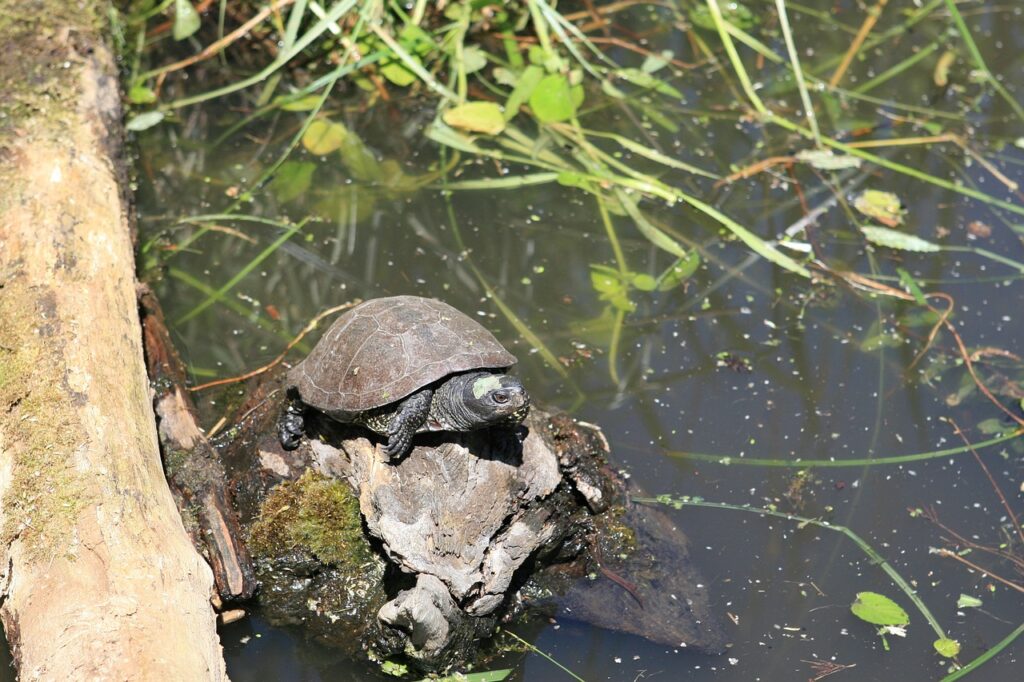
Feeding and Diet
Vegetation
Wood Turtles are primarily herbivorous and should be offered a variety of vegetation in their diet. Leafy greens, such as kale, collard greens, and dandelion greens, should make up the bulk of their plant-based diet. Other vegetables, such as carrots, sweet potatoes, and zucchini, can be fed in small amounts. It’s important to provide a varied diet to ensure the turtle receives all necessary nutrients.
Protein Sources
While Wood Turtles are primarily herbivorous, they also require some animal protein in their diet. In the wild, they consume insects and small invertebrates, such as worms and snails. Feeding small amounts of high-quality commercial turtle pellets or freeze-dried insects can help supplement their protein intake. It’s important to strike a balance between plant-based and protein-based foods to ensure the turtle’s nutritional needs are met.
Supplements
To ensure proper nutrition, Wood Turtles may benefit from calcium and vitamin D3 supplements. These can be dusted onto their food every 1 to 2 feedings. Calcium is crucial for shell and bone health, while vitamin D3 aids in calcium absorption. It’s important to consult a reptile veterinarian to determine the appropriate dosage and frequency of supplementation for your Wood Turtle.
Water Requirements
Water Temperature
Wood Turtles require access to clean, freshwater for drinking and swimming. The water temperature should be kept between 70 to 80 degrees Fahrenheit. A submersible water heater can be used to maintain a consistent water temperature within this range. Regular water changes are necessary to prevent the buildup of harmful bacteria or toxins.
Filtration and Aeration
To keep the water clean and free from contaminants, a filtration system should be used in the turtle’s aquatic area. A mechanical filter, such as a sponge filter or canister filter, can help remove debris and waste from the water. Additionally, an air pump and airstone can be used to provide adequate aeration, ensuring the water remains oxygenated for the turtle’s healthy respiration.
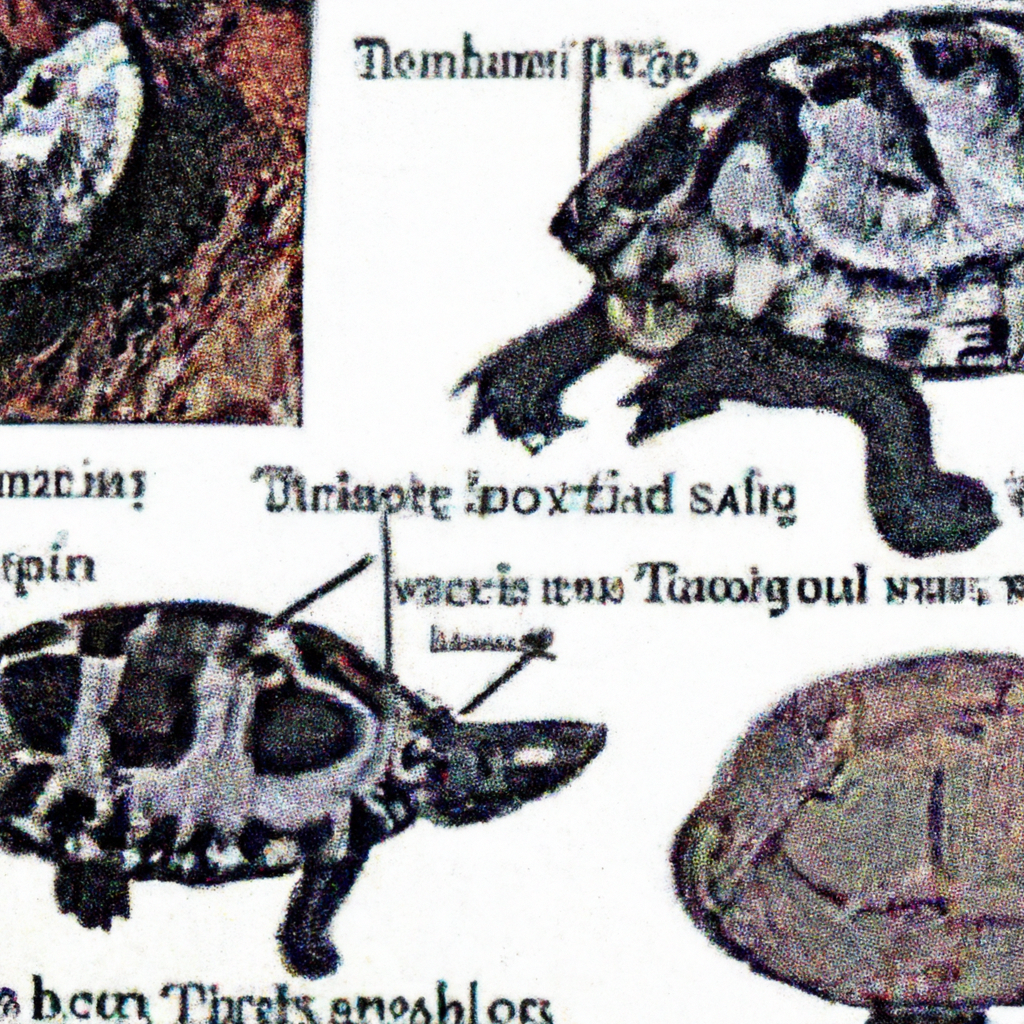
Health and Care
Regular Veterinary Check-ups
Regular check-ups with a reptile veterinarian are essential for maintaining the health of your Wood Turtle. During these visits, the vet can assess the turtle’s overall condition, provide necessary vaccinations, and perform any required diagnostic tests. They can also offer guidance on habitat setup, diet, and general care to ensure your Wood Turtle remains healthy and happy.
Shell Care
Keeping the shell of your Wood Turtle in good condition is vital for their health and well-being. Regularly inspect the shell for any signs of damage, such as cracks or lesions. If any issues are detected, seek veterinary care immediately. Providing a shallow water dish for the turtle to soak in can help keep the shell clean and hydrated. Avoid using harsh chemicals or soaps when cleaning the shell, as these can strip away the natural protective layers.
Preventing Common Illnesses
Wood Turtles can be prone to various health issues, including respiratory infections, shell rot, and parasite infestations. To prevent these common illnesses, it’s essential to maintain a clean and well-maintained enclosure. Regularly clean and disinfect the enclosure to prevent the buildup of bacteria or parasites. Avoid overcrowding and maintain proper temperature and humidity levels within the enclosure.
Interaction and Handling
Gentle Approach
While Wood Turtles can be fascinating creatures to observe, it’s important to keep in mind that they are wild animals and may not enjoy or tolerate excessive handling. When interacting with your Wood Turtle, approach them with a gentle and calm demeanor. Allow them to become familiar with your presence and avoid sudden movements that may startle or stress them. Always handle the turtle with clean hands and avoid touching or grabbing their limbs or tail, as this can cause them distress.
Avoiding Excessive Stress
Wood Turtles are sensitive to stress, which can lead to health issues and a decreased quality of life. To minimize stress, provide your Wood Turtle with a quiet and peaceful environment. Avoid loud noises, sudden temperature changes, and excessive handling. Additionally, avoid introducing new additions into the enclosure without proper quarantine and acclimation procedures, as this can also cause stress to the turtle.
In conclusion, the Wood Turtle is a unique and fascinating species that requires proper care and attention to thrive. By understanding their physical appearance, habitat requirements, behavior, and dietary needs, you can create an ideal environment for your Wood Turtle and ensure their longevity and well-being. Remember to educate yourself about their specific needs and consult with experts, such as reptile veterinarians, to provide the best possible care for these incredible creatures.

